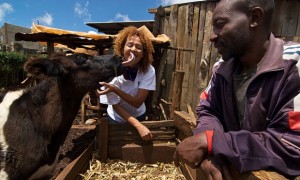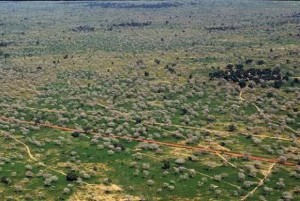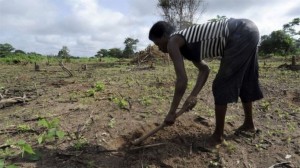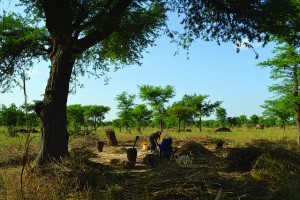 A mobile phone database for dairy farmers and a strain of sweet potato that can help fight child blindness. these are just two of the imaginative new ideas that are tackling Africa’s old problems.
A mobile phone database for dairy farmers and a strain of sweet potato that can help fight child blindness. these are just two of the imaginative new ideas that are tackling Africa’s old problems.
1 HIPPO WATER ROLLER
Idea: The Hippo water roller is a drum that can be rolled on the ground, making it easier for those without access to taps to haul larger amounts of water faster.
Problem: Two out of every five people in Africa have no nearby water facilities and are forced to walk long distances to reach water sources. Traditional methods of balancing heavy loads of water on the head limit the amount people can carry, and cause long-term spinal injuries. Women and children usually carry out these time-consuming tasks, missing out on educational and economic opportunities. In extreme cases, they can be at increased risks of assault or rape when travelling long distances.
Method: The Hippo roller can be filled with water which is then pushed or pulled using a handle. The weight of the water is spread evenly so a full drum carries almost five times more than traditional containers, but weighs in at half the usual 20kg, allowing it to be transported faster. A steel handle has been designed to allow two pushers for steeper hills. “Essentially it alleviates the suffering people endure just to collect water and take it home. Boreholes or wells can dry out but people can still use the same roller [in other wells]. One roller will typically serve a household of seven for five to seven years,” said project manager Grant Gibbs.
Verdict: Around 42,000 Hippo rollers have been sold in 21 African countries and demand exceeds supply. Costing $125 each, they are distributed through NGOs. A mobile manufacturing unit is set to begin making them in Tanzania. Nelson Mandela has made a “personal appeal” for supporting for the project, saying it “will positively change the lives of millions of our fellow South Africans”. Monica Mark
Click her for the full story
 Modernising Africa’s agriculture sector to attract young people will help tackle youth unemployment and food insecurity, a report has suggested. The findings were outlined in the 2015 African Agriculture Status Report. Despite the dominance of agriculture in many economies, outdated land-tenure systems and poor access to finance deter new entrants to farming, it said.
Modernising Africa’s agriculture sector to attract young people will help tackle youth unemployment and food insecurity, a report has suggested. The findings were outlined in the 2015 African Agriculture Status Report. Despite the dominance of agriculture in many economies, outdated land-tenure systems and poor access to finance deter new entrants to farming, it said.




